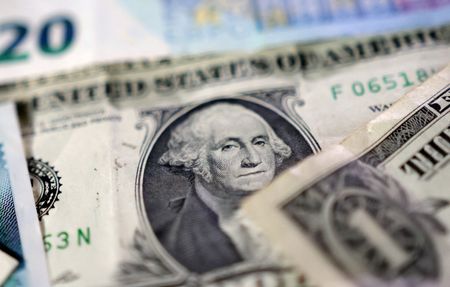By Mohi Narayan
NEW DELHI (Reuters) -Oil prices steadied on Wednesday, after falling in the previous session, as investors watched for fresh developments in the Ukraine war and weighed hefty new U.S. tariffs on India, the world’s third-biggest crude consumer.
Brent crude futures fell 9 cents to $67.13 per barrel at 0633 GMT, while West Texas Intermediate (WTI) crude futures were down 8 cents at $63.17.
Both contracts fell more than 2% on Tuesday after beginning the week at a two-week high.
“(There is) a lot of uncertainty over how the Ukraine stalemate might be resolved, which portends volatility for crude but likely in a relatively small range,” said Vandana Hari, founder of oil market analysis provider Vanda Insights.
“Over the past week or so, much of the Ukraine peace discount has been reversed, but the market is also not ready to price in a major supply risk premium,” Hari added.
U.S. special envoy Steve Witkoff said on Tuesday he will meet Ukrainian representatives in New York this week, adding that Washington is also in talks with Russia as it seeks to end the war.
Additionally, U.S. President Donald Trump’s doubling of tariffs on goods from India to as much as 50% took effect as scheduled on Wednesday.
Trump has said the higher charges are a result of India’s Russian oil buying, which increased following Moscow’s invasion of Ukraine as Western sanctions led Russia to discount its cargoes.
Indian refiners initially curbed their Russian crude purchases following the U.S. tariff announcements and after stricter European Union sanctions on Russian-backed Indian refinery Nayara Energy.
However, state-owned refiners Indian Oil and Bharat Petroleum have resumed buying Russian supplies for September and October, company sources said last week. Indian Oil, the country’s biggest refiner, has said it will continue to buy Russian crude depending on the economics.
That has led some analysts to question how much impact the higher U.S. tariffs will have on Indian purchases.
“The secondary tariff has not been enough to stop India from buying Russian oil. The market will be watching Russian oil flows to India closely going forward to gauge the impact, if any, of secondary tariffs,” Warren Patterson, head of commodity strategy at ING, said in a note.
Analysts estimate India has saved at least $17 billion by increasing oil imports from Russia since early 2022. Additional tariffs of up to 50% on Indian imports could slash exports by more than 40%, or nearly $37 billion, this April-March fiscal year alone, according to New Delhi think-tank Global Trade Research Initiative (GTRI).
The war in Ukraine is influencing the oil market in other ways as Ukrainian drone attacks on Russian refineries are cutting their operations, requiring them to export the crude they cannot process.
Russia has revised up its crude oil export plan from western ports by 200,000 barrels per day in August from the initial schedule after attacks last week, three people familiar with the matter said on Tuesday.
(Reporting by Mohi Narayan and Sudarshan Varadhan; Editing by Christian Schmollinger and Jamie Freed)











